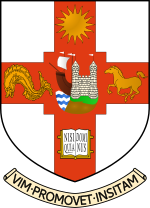The AD Scientific Index (Alper-Doger Scientific Index) provides the most comprehensive analysis across 13 main fields and 197 sub-branches at global, national, and regional levels. These analyses are based on indicators such as the H-index, i10-index, and citation count, including their values from the last 6 years. As of Jan 31, 2025, the rankings are determined according to the Total H Index. BETA VERSION: The subject field rankings for the world, regions, countries, and universities are currently in their Beta phase. This is due to the exclusion of (873.690) scientists categorized under ‘Others’, whose profiles have yet to be determined, edited, or classified. As updates are made to these fields, the rankings will be adjusted accordingly. Note: Please keep this in mind while reviewing the rankings. For further details, explore our [University Subject Rankings].




